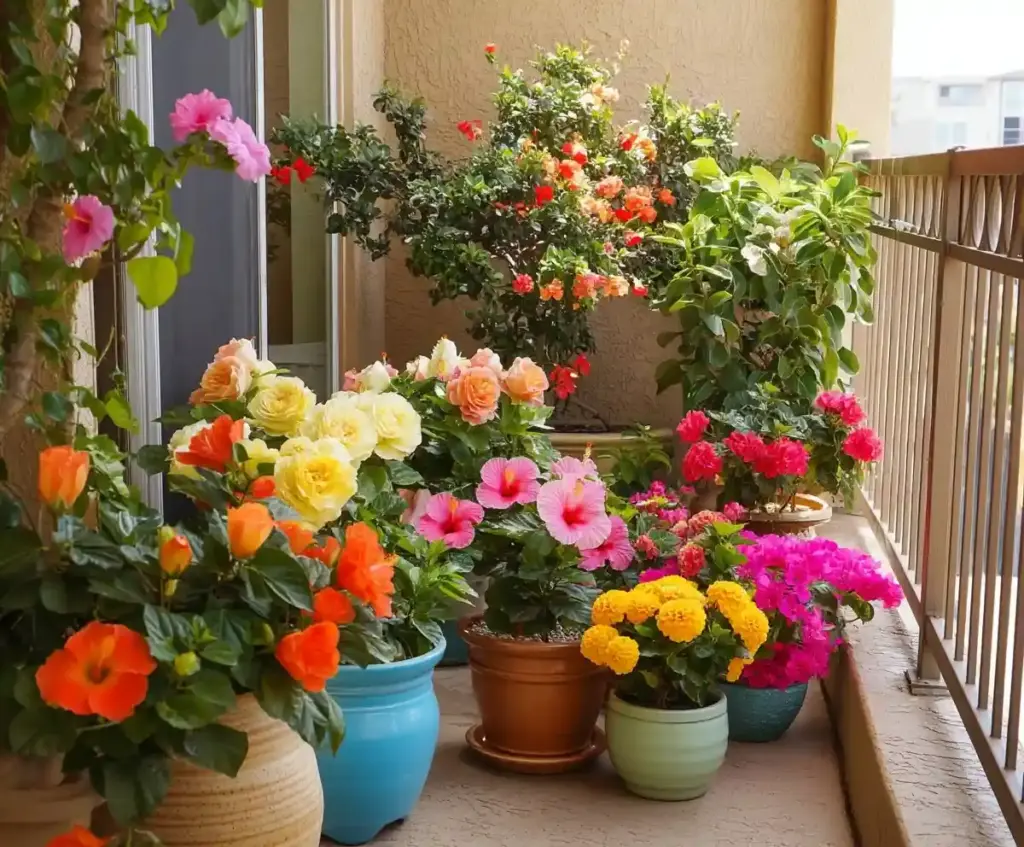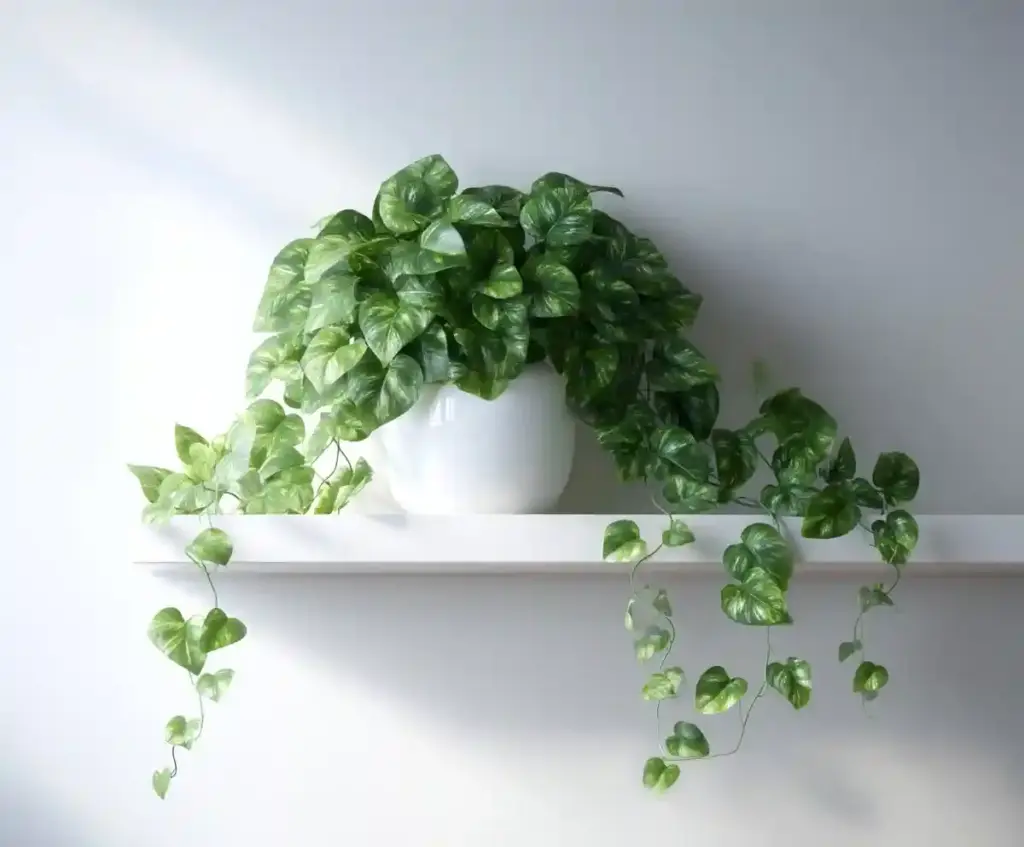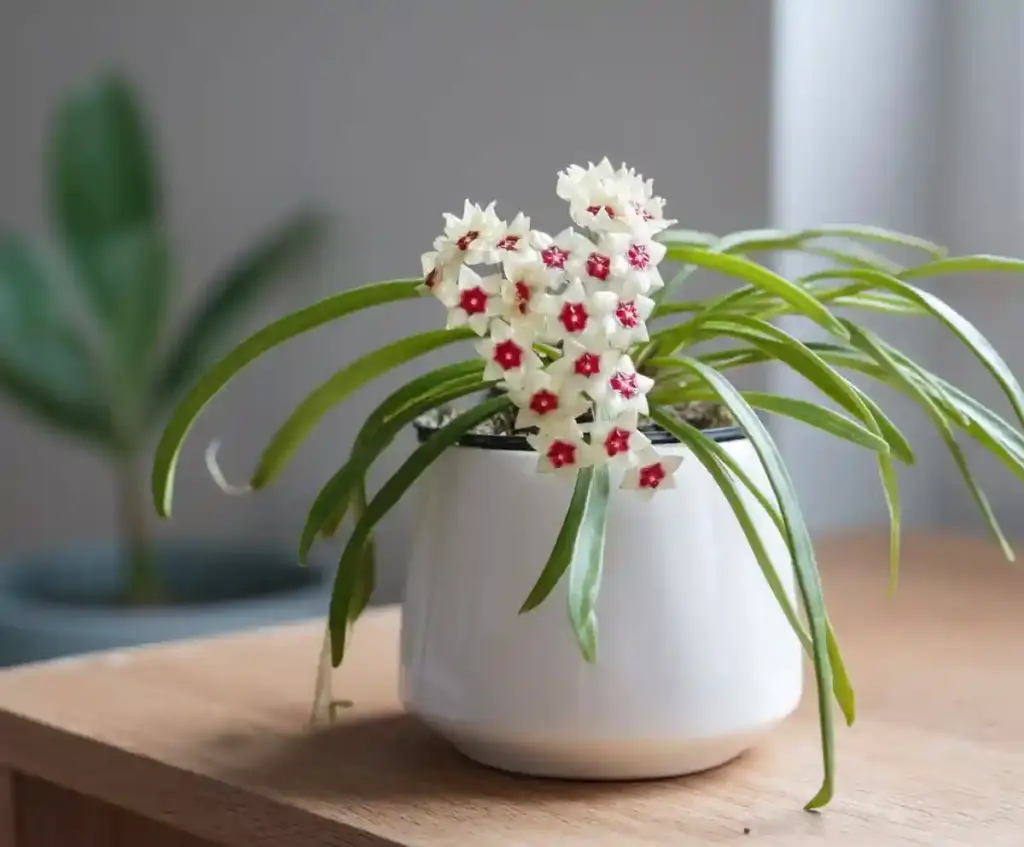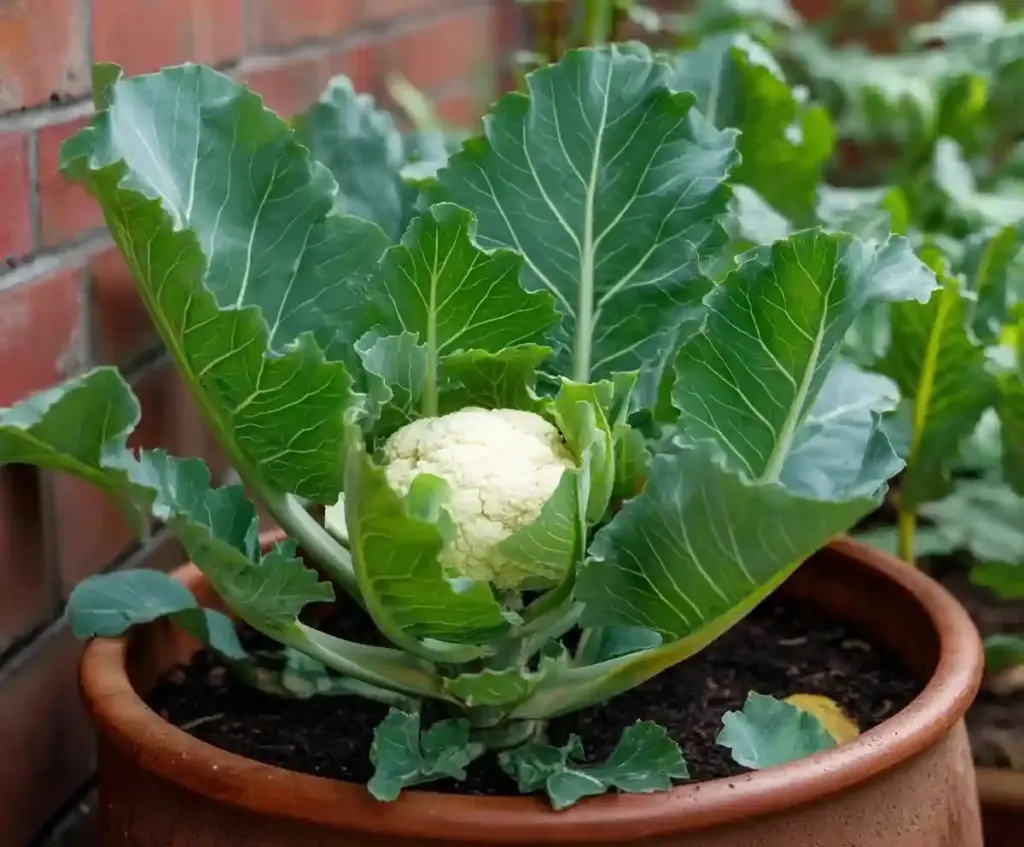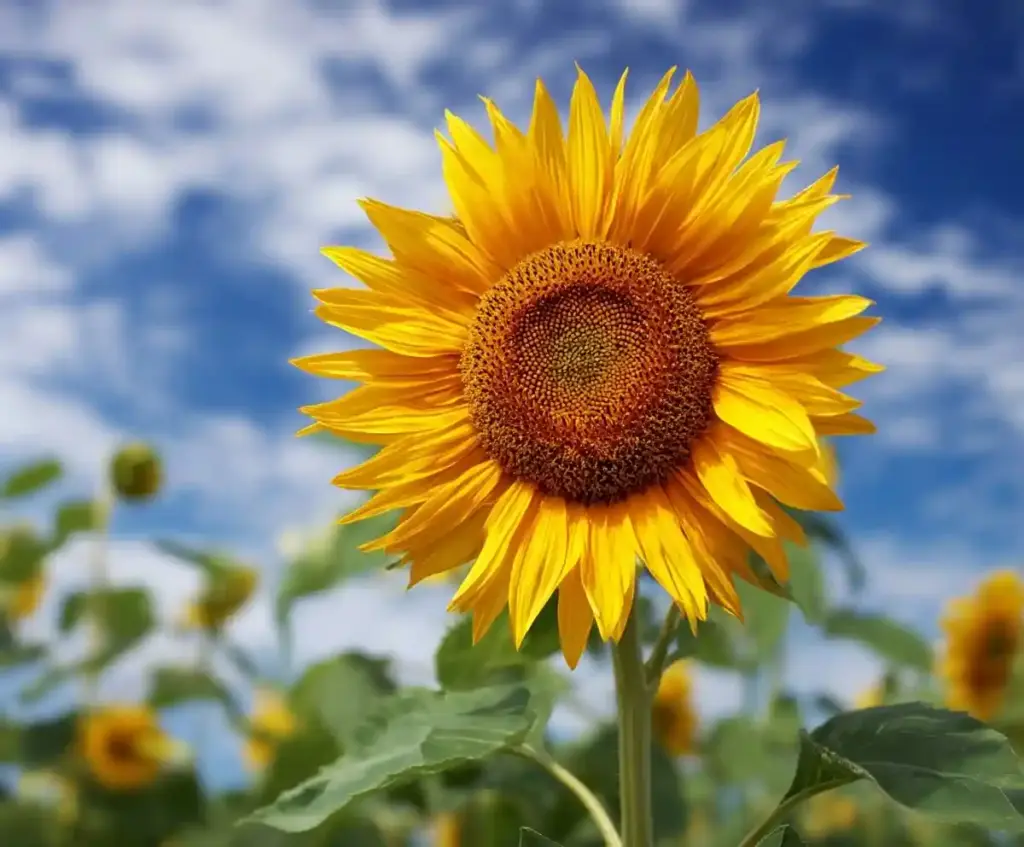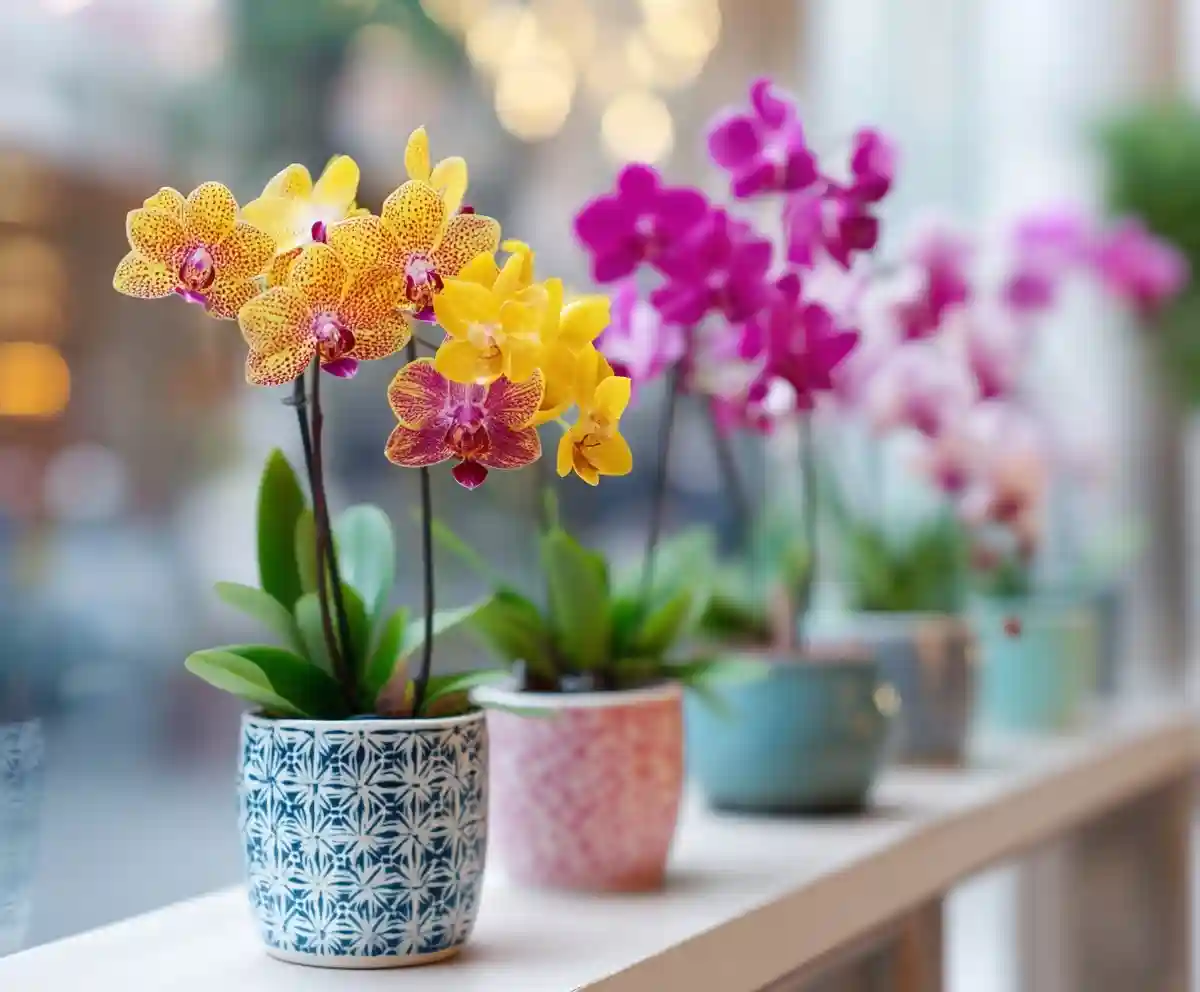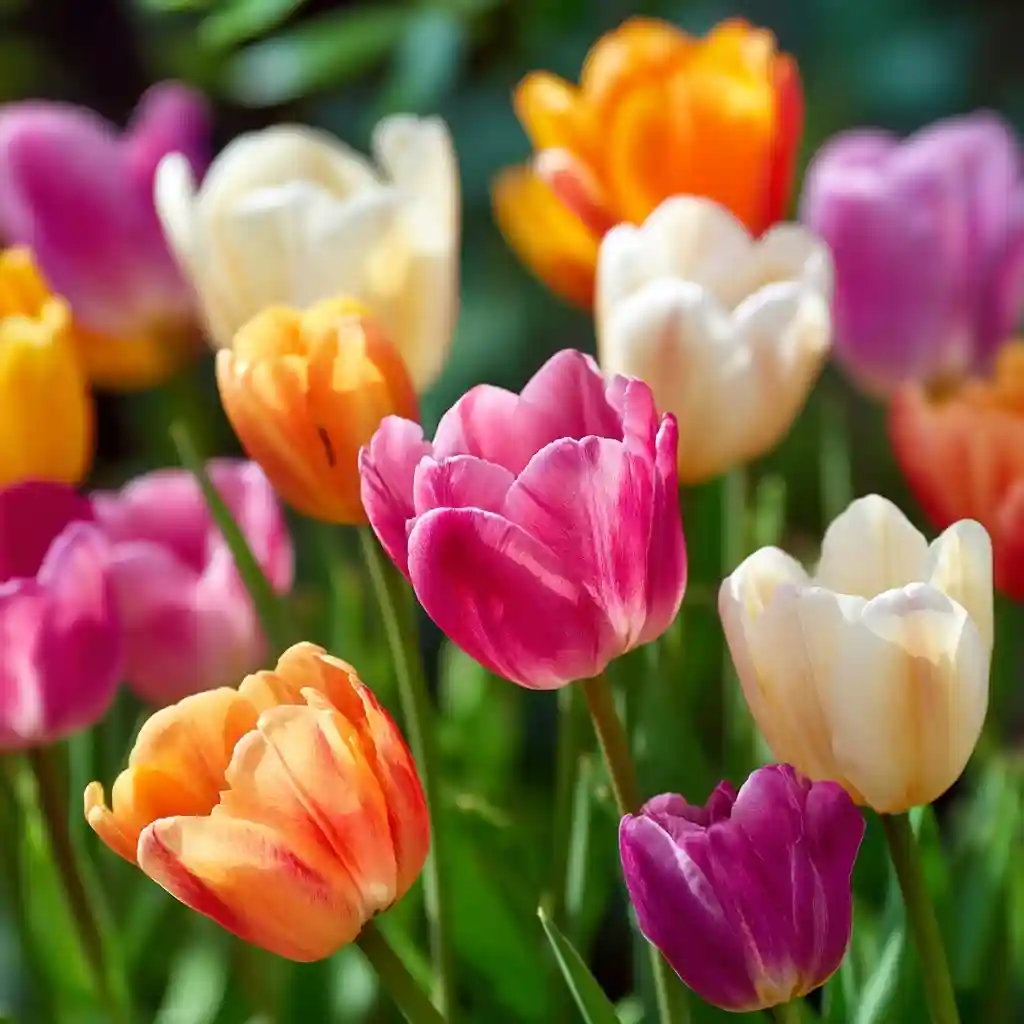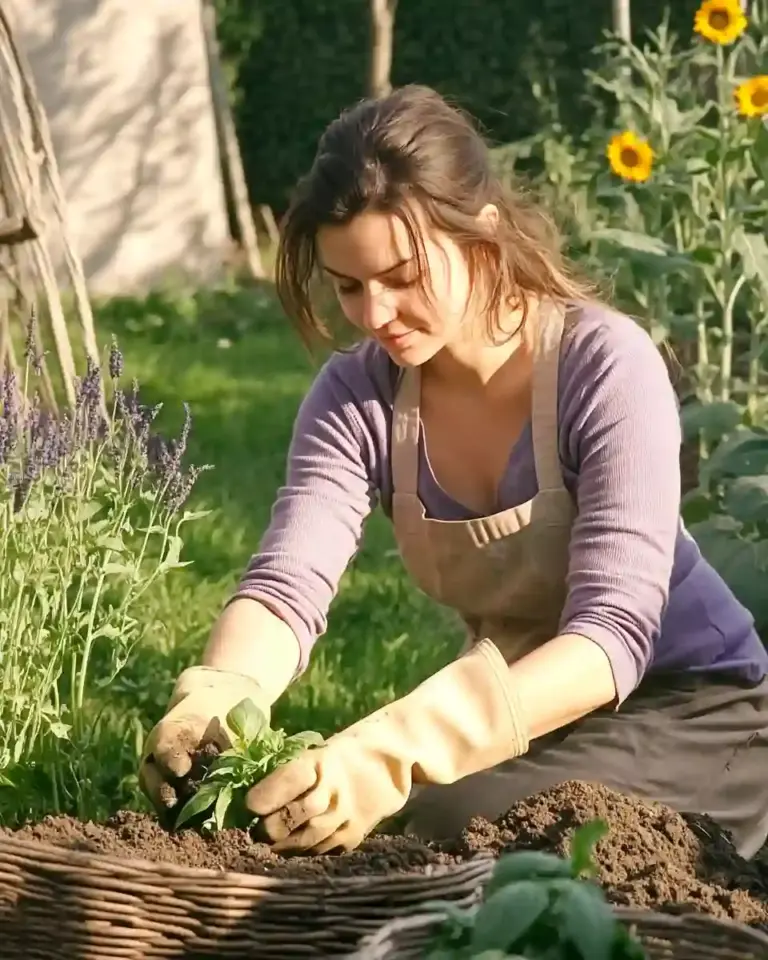Spring flowers are nature’s way of throwing a grand celebration after a long, gray winter. As the chill fades and daylight lingers, your garden becomes a canvas waiting for color. Whether you’re an avid gardener or just starting to explore plant life, spring offers a perfect opportunity to introduce blooms that are easy to grow, visually stunning, and full of character.
From timeless tulips to exotic orchids, these 15 must-plant spring flowers will add personality, fragrance, and bursts of color to your outdoor space. Each bloom has its own charm—some are sweetly scented, some thrive in tough conditions, and some are show-stopping focal points.
Let’s walk through a blooming bouquet of springtime favorites to transform your yard into a vibrant floral paradise.
1. Tulips: The Classic Spring Blooms
When it comes to spring flowers, tulips reign supreme. Known for their bold colors and clean, elegant shapes, these bulbs are a garden staple for a reason. Whether you prefer single hues or a vibrant mix, tulips offer endless possibilities for creative planting.
To get the most out of tulips, plant bulbs in the fall before the ground freezes. Choose a sunny spot with well-drained soil. Tulips don’t like soggy roots, so avoid low-lying areas where water tends to collect. Plant the bulbs 6 to 8 inches deep, pointy side up, and space them about 4 inches apart.
There are dozens of varieties to choose from—try classic Darwin hybrids for sturdy stems and long bloom time, or go bold with fringed and parrot tulips for added texture and flair.
💡 Quick Tips for Growing Tulips:
- Use a bulb planter for precise depth and spacing
- Apply a slow-release bulb fertilizer at planting time
- Water well after planting, then hold off until spring
Tulips bloom early to mid-spring and pair beautifully with daffodils or grape hyacinths. And don’t forget—they’re excellent cut flowers for spring arrangements indoors.
2. Daffodils: Cheerful Yellow Stars
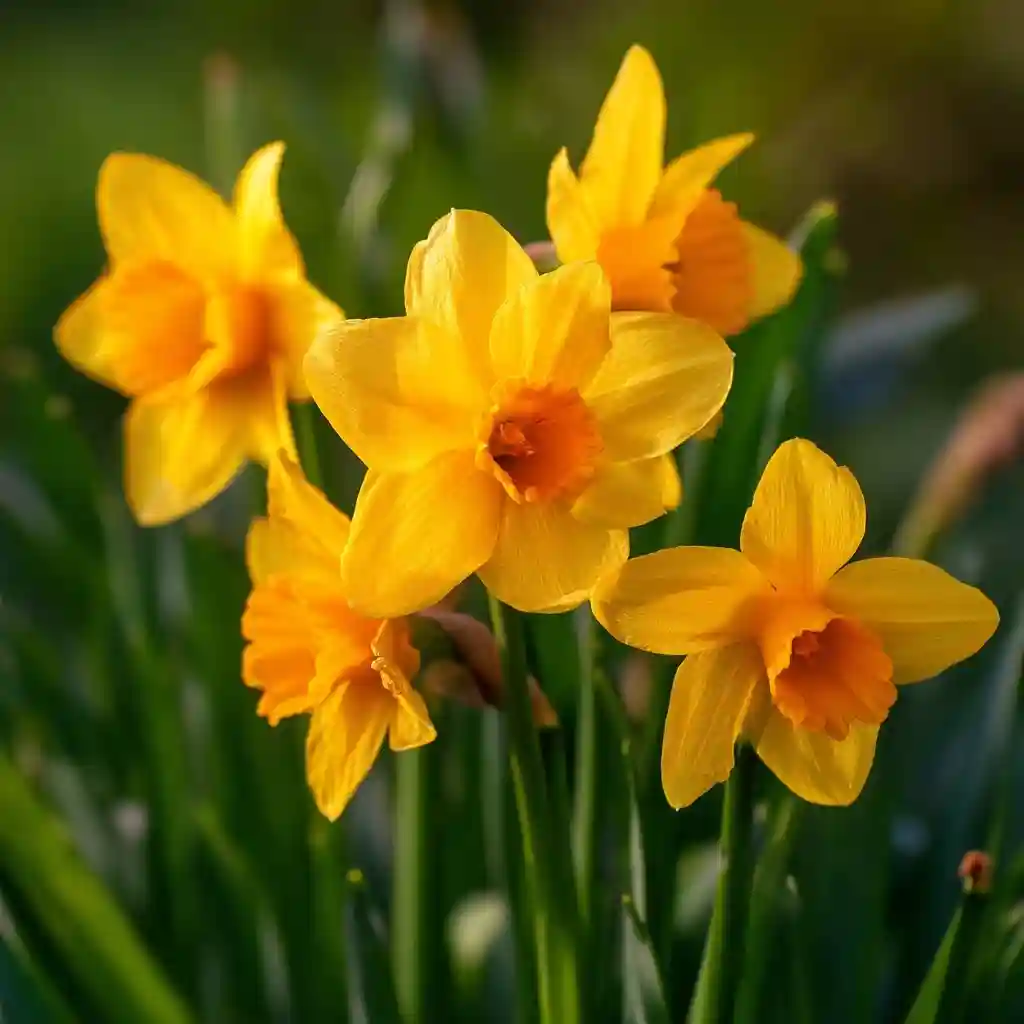
Few spring flowers capture the spirit of the season quite like daffodils. With their sunny yellow petals and trumpet-shaped centers, they’re among the first to bloom and one of the easiest to grow—even for beginners.
Daffodils thrive in full sun to partial shade and prefer well-drained soil. Plant the bulbs in fall, about 6 inches deep and 3–6 inches apart. Once established, they return year after year with little effort, naturalizing into larger, more impressive clumps over time.
One of the best features of daffodils is their resistance to pests—especially deer and rodents, who tend to leave them alone. That makes them a smart choice for gardens in rural or wooded areas.
💡 Quick Tips for Growing Daffodils:
- Choose a mix of early, mid, and late bloomers for extended color
- Don’t cut the foliage after blooming—let it yellow and die back naturally to feed the bulb
- Combine with crocuses or grape hyacinths for a layered effect
Whether planted along borders, under trees, or in containers, daffodils bring unmatched cheer and reliability to the early spring garden.
3. Hyacinths: Fragrant and Fabulous
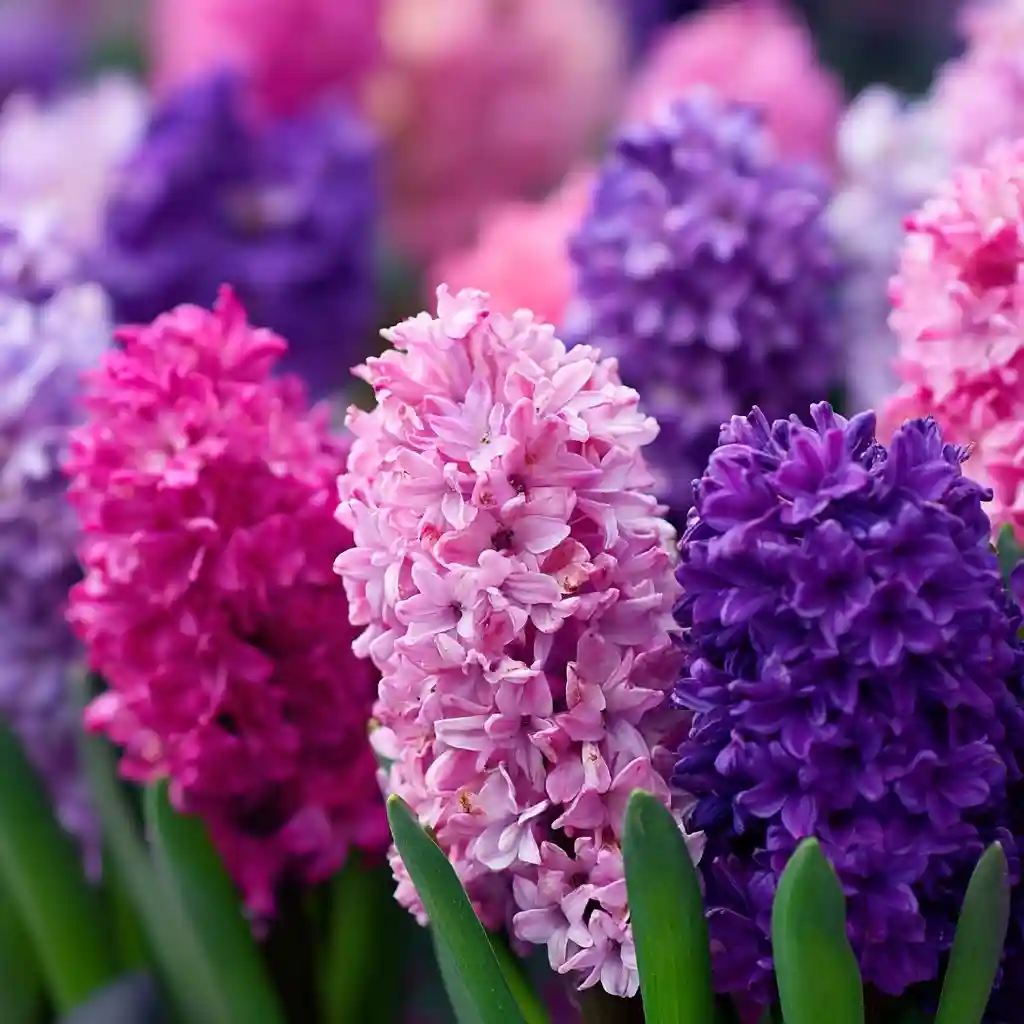
Among spring flowers, hyacinths are the fragrant powerhouses. Their dense flower spikes come in rich shades of purple, pink, blue, and white, releasing a sweet perfume that can fill your entire garden with scent.
Hyacinths are best planted in the fall, about 4 to 6 inches deep and 3 inches apart, in a sunny to partly shaded area. Like most bulbs, they prefer well-drained soil—soggy roots are their downfall. Once planted, they bloom reliably in early to mid-spring.
These beauties are perfect for garden borders, pathways, and containers where their scent can be appreciated up close. They’re also excellent for forcing indoors in pots or water vases if you’re eager to enjoy their blooms before winter ends.
💡 Quick Tips for Growing Hyacinths:
- Wear gloves when planting—the bulbs can irritate skin
- Add a layer of mulch in colder climates to protect them over winter
- Use supports if stems become top-heavy with blooms
Hyacinths shine brightest when planted in clusters. Try mixing different colors together for a rich, mosaic-like effect that’s both bold and elegant.
4. Crocuses: The Early Risers
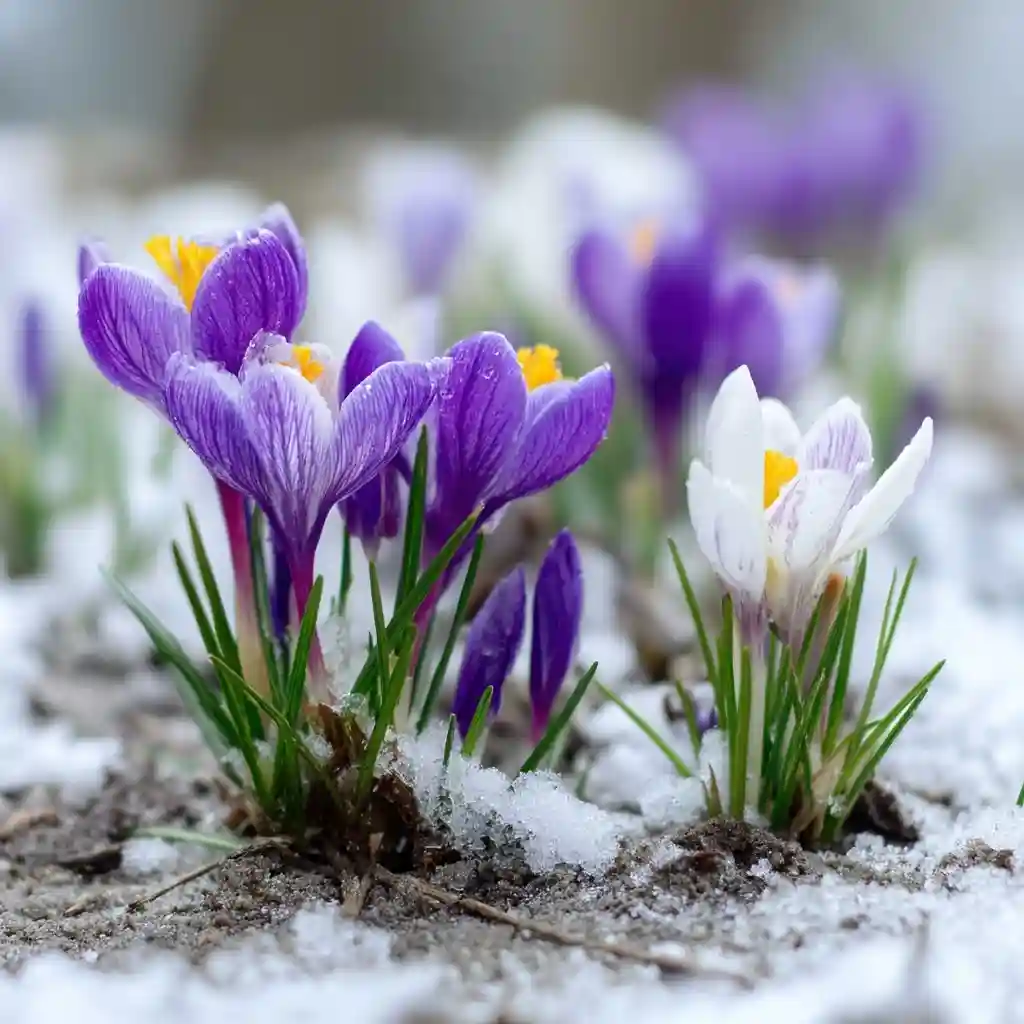
Crocuses are the true harbingers of spring—often blooming while there’s still snow on the ground. These petite spring flowers pop up in vivid shades of purple, yellow, and white, offering a cheerful preview of the growing season to come.
Crocus bulbs (technically corms) should be planted in the fall about 3 inches deep and 2–3 inches apart. They love full sun but are tolerant of partial shade, making them ideal for lawns, under trees, or tucked into rock gardens.
What makes crocuses especially appealing is their ability to naturalize quickly. Once planted, they’ll multiply year after year, forming colorful carpets that spread effortlessly.
💡 Quick Tips for Growing Crocuses:
- Choose well-draining soil to prevent bulb rot
- For a natural look, scatter corms by hand and plant them where they land
- Water only during extended dry periods
Pair crocuses with snowdrops or dwarf irises for an extra-early display of blooms that signals winter’s end and spring’s arrival.
5. Peonies: The Showstoppers

If you’re looking to make a bold statement with your spring flowers, peonies are the ultimate garden stars. Known for their massive, ruffled blooms and intoxicating scent, peonies come in a range of colors—soft pinks, creamy whites, vibrant corals, and rich reds.
Unlike many spring bulbs, peonies are perennials that can live for decades with proper care. They’re best planted in fall or early spring in full sun and rich, well-draining soil. The most critical planting tip? Don’t plant the root crown too deep—just 1–2 inches below the soil surface is ideal.
Peonies need a bit of patience—they may take a year or two to bloom after planting, but once established, they’ll reward you with stunning displays every year.
💡 Quick Tips for Growing Peonies:
- Use support rings or stakes to keep heavy blooms upright
- Avoid overwatering—once established, they’re drought-tolerant
- Cut back foliage in late fall to prevent disease
Plant peonies along fences, in flower beds, or as standalone garden focal points. Their longevity and dramatic flair make them a true investment in beauty.
6. Lilies: Elegant Touches
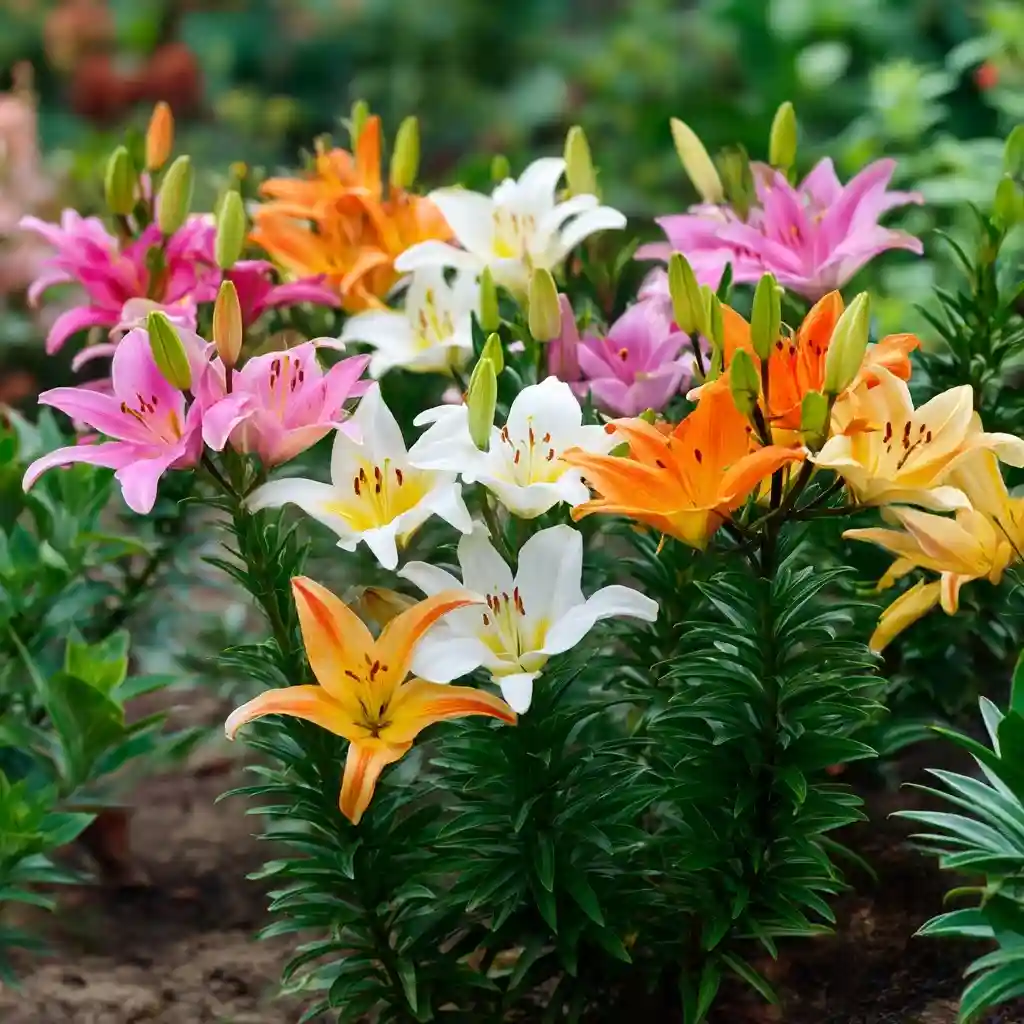
Among spring flowers, lilies bring a sense of grace and structure to the garden. With tall stems and trumpet-shaped blossoms, they add vertical elegance and come in a variety of types—Asiatic, Oriental, and trumpet lilies being the most popular.
Lilies are typically planted in early spring or fall, about 6 inches deep in well-drained soil. They love full sun but appreciate a bit of shade at the root level—so consider planting low-growing companions like hostas or ground covers around them.
What sets lilies apart is their stunning range of colors and the ability to bloom in succession. By mixing different varieties, you can enjoy continuous blooms from late spring into summer.
💡 Quick Tips for Growing Lilies:
- Stake taller varieties to prevent flopping in windy areas
- Deadhead spent flowers to encourage new blooms and prevent seed formation
- Add mulch to keep soil cool and retain moisture
Lilies are also excellent in cutting gardens, with many varieties holding up well in vases. Their classic, sculptural shape makes them a garden essential for both beauty and balance.
7. Snapdragons: Whimsical and Fun
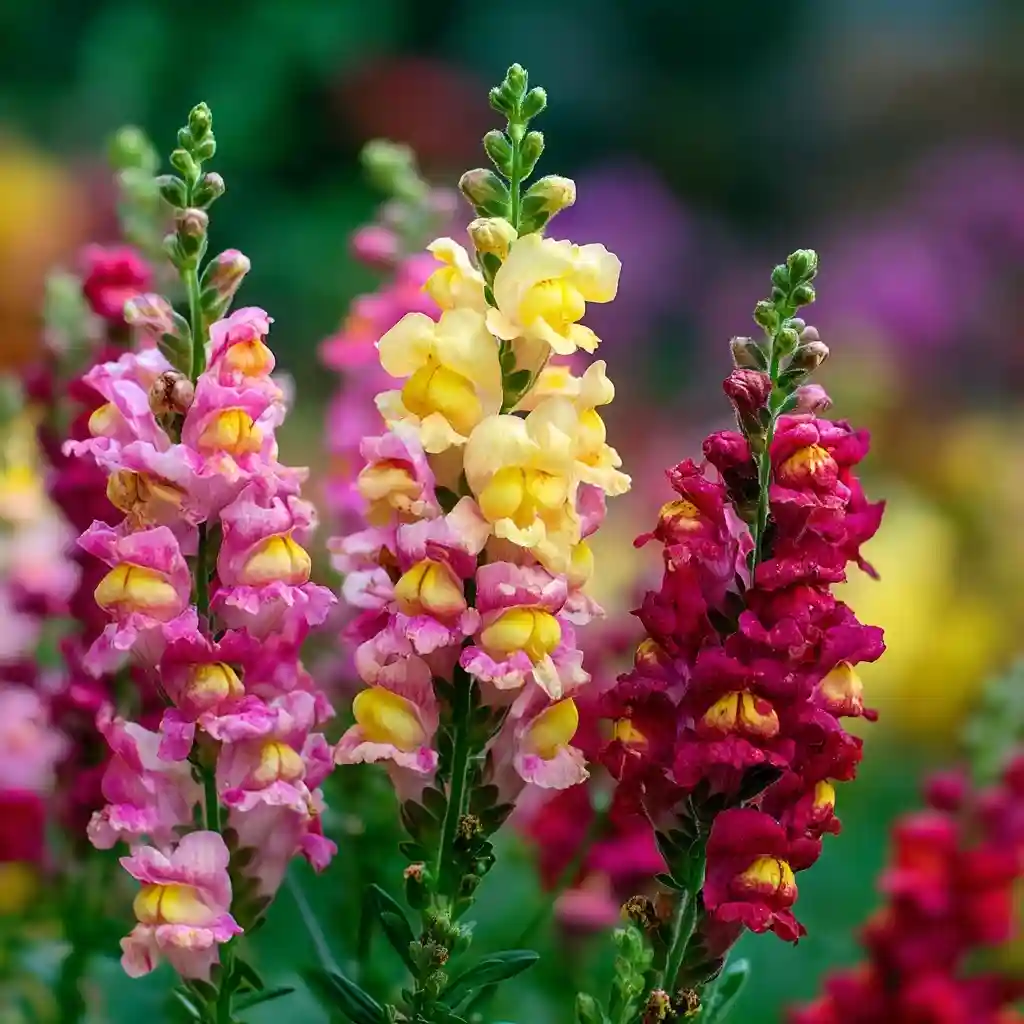
Snapdragons bring a touch of playfulness to the world of spring flowers. Known for their dragon-like blooms that “snap” open when gently squeezed, they’re a favorite among children and gardeners alike. Available in a rainbow of colors—from soft pastels to bold reds and oranges—snapdragons add vertical interest and personality to any bed or border.
These cool-weather annuals prefer full sun and rich, well-drained soil. You can start them from seed indoors 6–8 weeks before the last frost or buy young plants from a nursery for quicker results. They begin blooming in spring and, with proper care, can continue flowering into early summer.
Snapdragons come in dwarf, medium, and tall varieties, making them versatile for front, middle, or back-of-the-border planting.
💡 Quick Tips for Growing Snapdragons:
- Pinch back young plants to encourage bushier growth
- Deadhead regularly to extend the bloom season
- Fertilize every few weeks with a balanced flower feed
Snapdragons are also fantastic as cut flowers and will add a bit of whimsy to your indoor arrangements. Their long stems and rich colors make them a florist favorite.
8. Iris: The Majestic Blooms
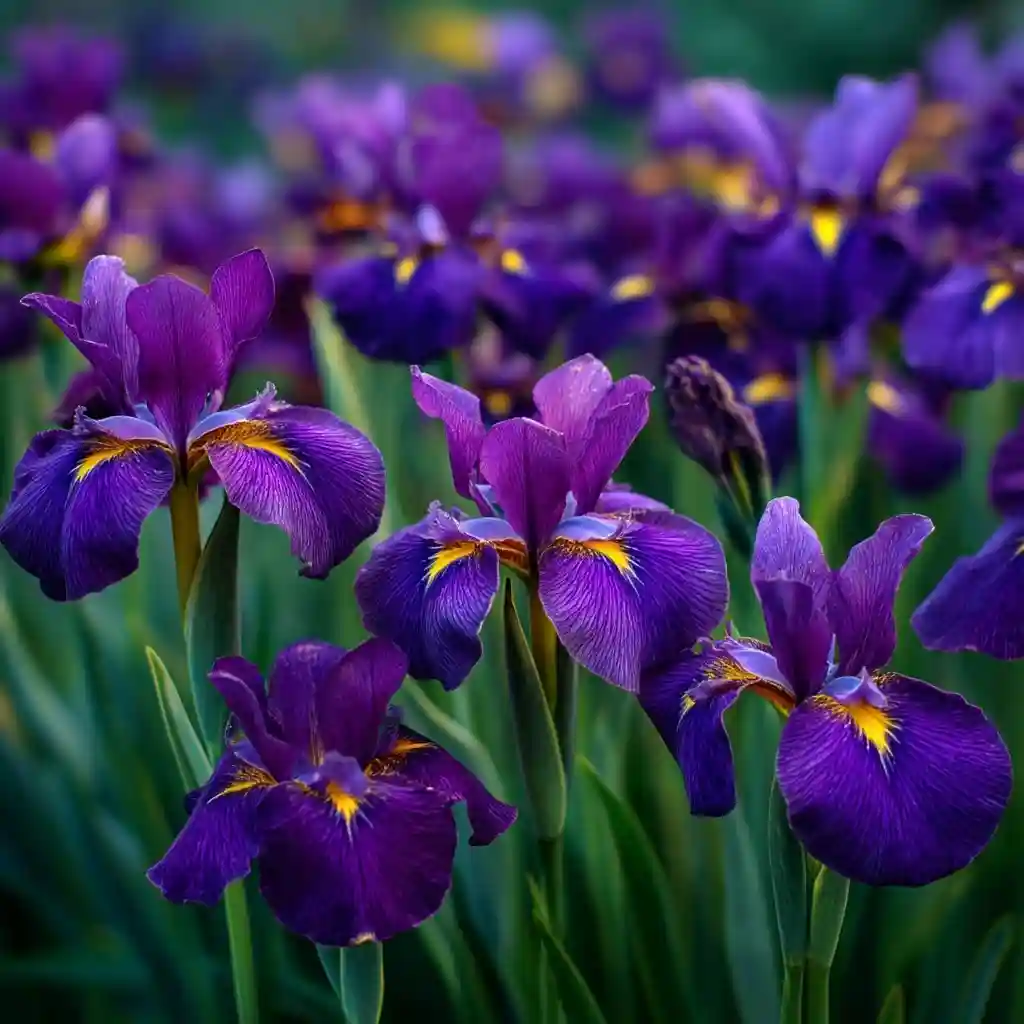
Irises are among the most regal of spring flowers, known for their sword-like leaves and intricate, ruffled petals. These bold perennials add height and drama to garden beds, often blooming in rich purples, deep blues, sunny yellows, and soft whites.
Irises thrive in full sun and prefer well-drained soil. There are several types, but bearded irises are especially popular in spring gardens. When planting rhizomes, keep the top just barely exposed above the soil surface to prevent rot.
One of the best features of irises is their long life—once established, they can bloom beautifully for years with minimal care. They’re also deer-resistant and drought-tolerant, making them an excellent low-maintenance choice.
💡 Quick Tips for Growing Irises:
- Divide clumps every 3–4 years to maintain strong blooming
- Avoid mulch directly over rhizomes—it can cause rot
- Water deeply, but infrequently
Plant irises in groups for bold impact or pair with peonies and alliums for a layered, textural spring display. Their sculptural flowers and striking foliage ensure they stand tall in any garden plan.
9. Calla Lilies: The Exotic Beauties
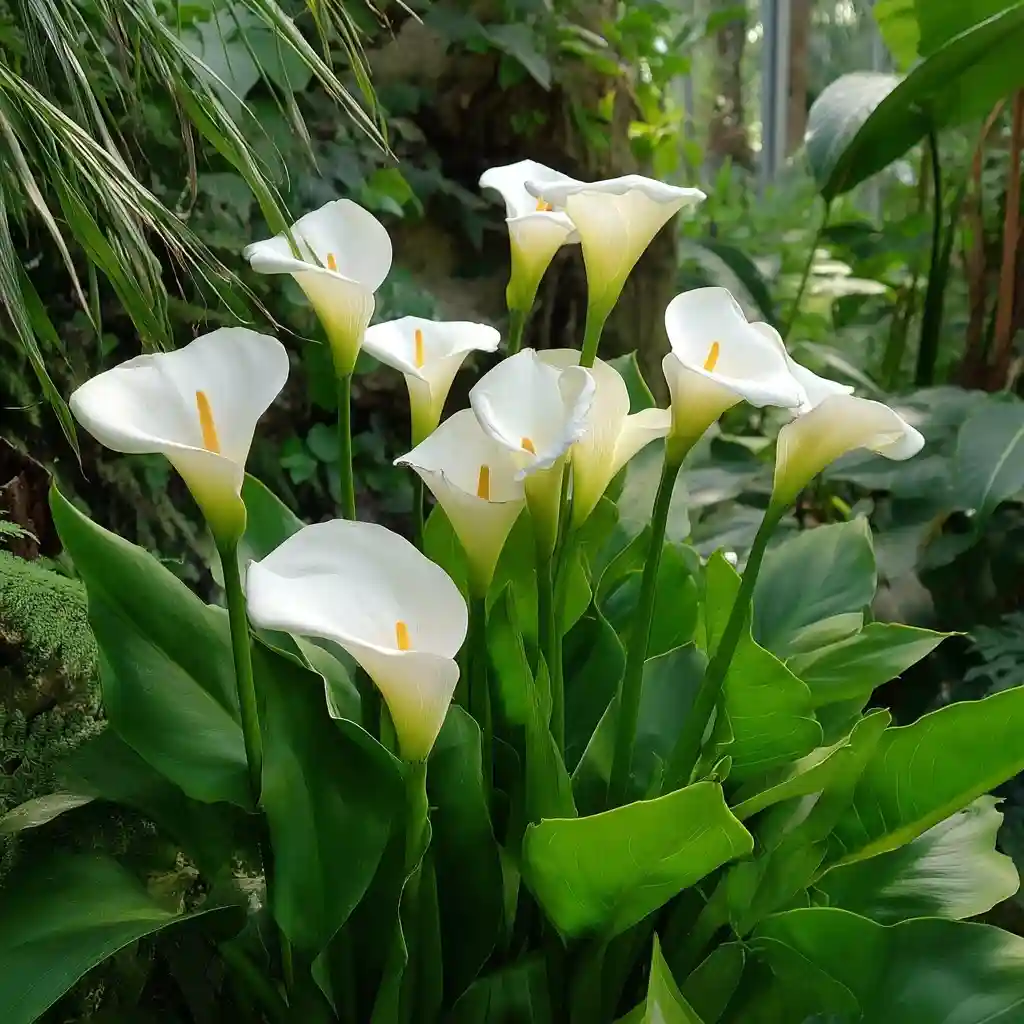
Calla lilies bring an exotic elegance to the family of spring flowers. With their smooth, trumpet-shaped blooms and rich, waxy leaves, they add sophistication to flower beds, borders, and containers alike. Available in striking shades like white, pink, yellow, orange, and deep burgundy, callas offer both color and style.
These tender perennials prefer moist, well-drained soil and partial sun. In cooler climates, they’re often treated as annuals or grown in pots that can be brought indoors during colder months. In warmer zones (USDA 8–10), calla lilies can be left in the ground year-round.
Plant rhizomes about 3–4 inches deep after the last frost, spacing them 12 inches apart. They’ll typically bloom 8–10 weeks after planting and can continue into summer with the right care.
💡 Quick Tips for Growing Calla Lilies:
- Keep soil consistently moist, but not soggy
- Add compost to enrich planting areas
- Cut flowers just as they open for long-lasting indoor arrangements
Calla lilies also shine as cut flowers, bringing luxury and sculptural beauty to bouquets. For maximum impact, group them in clusters or line a walkway for a dramatic, high-end look.
10. Geraniums: The Cheerful Workhorses
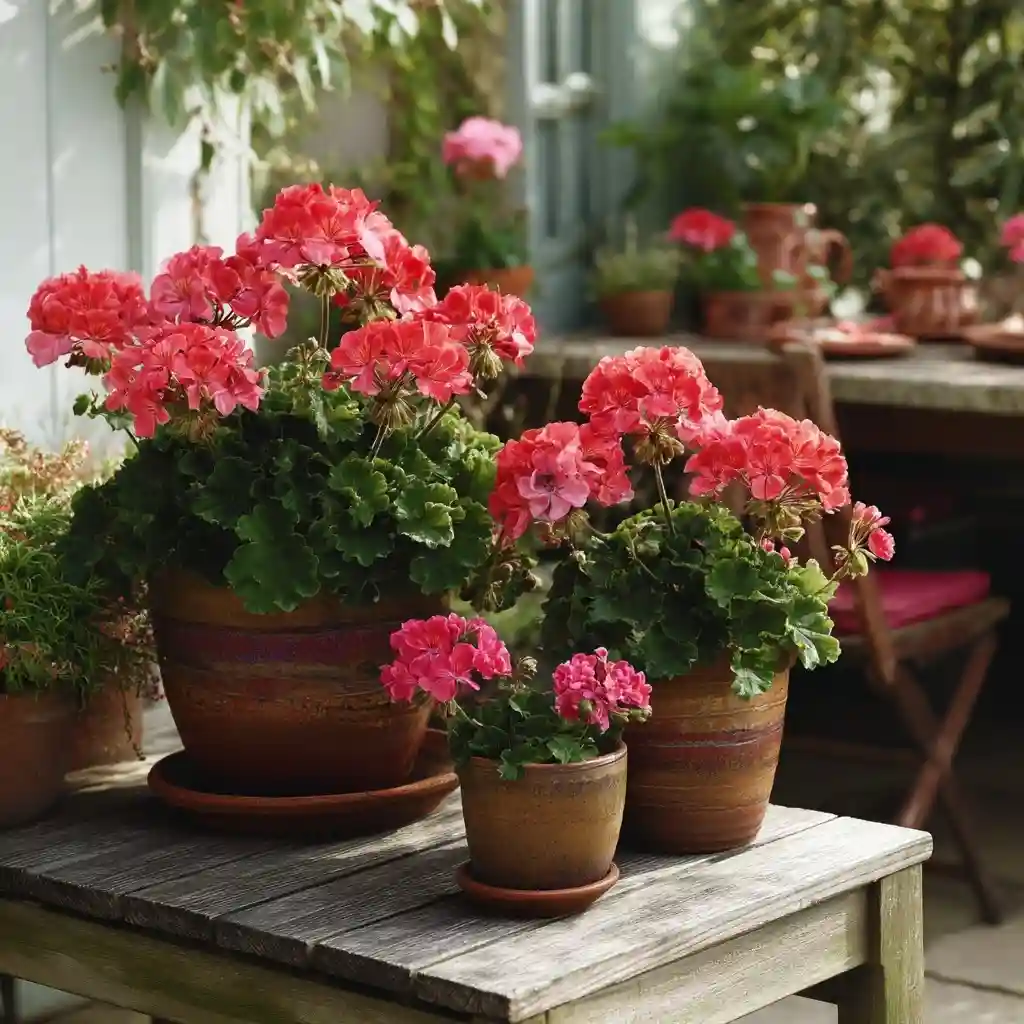
Geraniums are the no-fuss heroes of spring flowers—hardy, colorful, and endlessly adaptable. Whether you’re planting in beds, borders, or hanging baskets, these annual favorites offer long-lasting blooms from spring well into fall.
Most commonly, gardeners grow zonal geraniums, prized for their upright habit and bold red, pink, or white flowers. Ivy geraniums, with their trailing growth, are ideal for containers or window boxes. Both types thrive in full sun and well-drained soil, though they’ll tolerate partial shade, especially in hot climates.
Geraniums are also drought-tolerant once established and attract pollinators like bees and butterflies. Regular deadheading keeps them blooming non-stop.
💡 Quick Tips for Growing Geraniums:
- Use a light, nutrient-rich potting mix for containers
- Water thoroughly but allow soil to dry out between waterings
- Pinch back leggy stems to encourage bushier growth
These tough, cheerful plants are great for beginners and a staple in many gardens for their reliability, vivid colors, and minimal care needs. Mix them with marigolds, petunias, or nasturtiums for a dazzling spring combo.
11. Foxgloves: The Tall Elegance
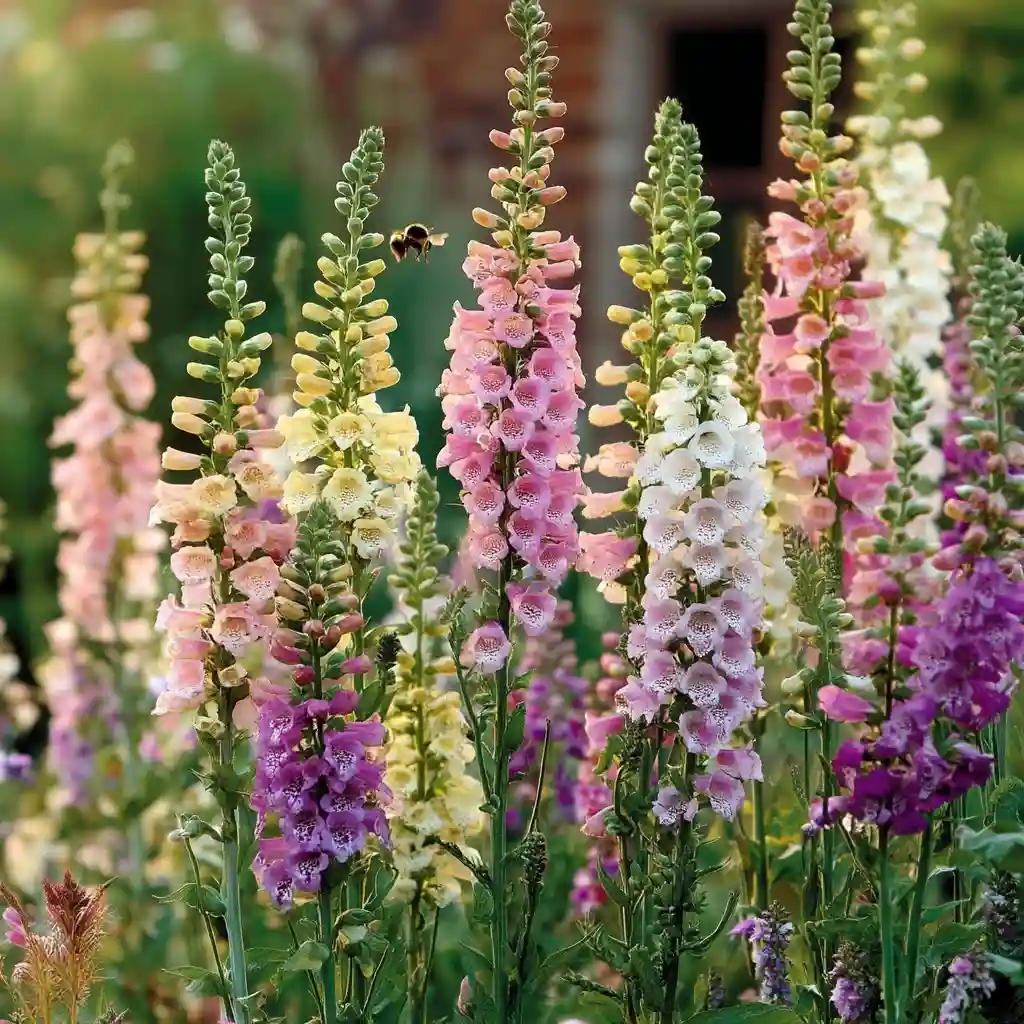
Few spring flowers bring as much vertical drama as foxgloves. With their towering spires of bell-shaped blooms, these biennials (and sometimes short-lived perennials) create an enchanting, cottage-garden look that feels both romantic and wild.
Foxgloves thrive in partial shade and moist, well-drained soil. They often bloom in their second year, so patience is key—but once established, they self-seed generously, returning year after year with little intervention.
Available in soft pinks, creamy whites, purples, and speckled blends, their blooms attract hummingbirds and bees, making them a pollinator favorite.
💡 Quick Tips for Growing Foxgloves:
- Start from seed in summer or plant nursery-grown starts in early spring
- Space plants about 12–18 inches apart for good air circulation
- Wear gloves when handling—foxgloves are toxic if ingested
Use foxgloves as a back-of-the-border plant to anchor garden beds or line them along a fence for a dramatic floral wall. Their architectural height and old-world charm make them truly unforgettable.
12. Sweet Peas: The Scented Delights
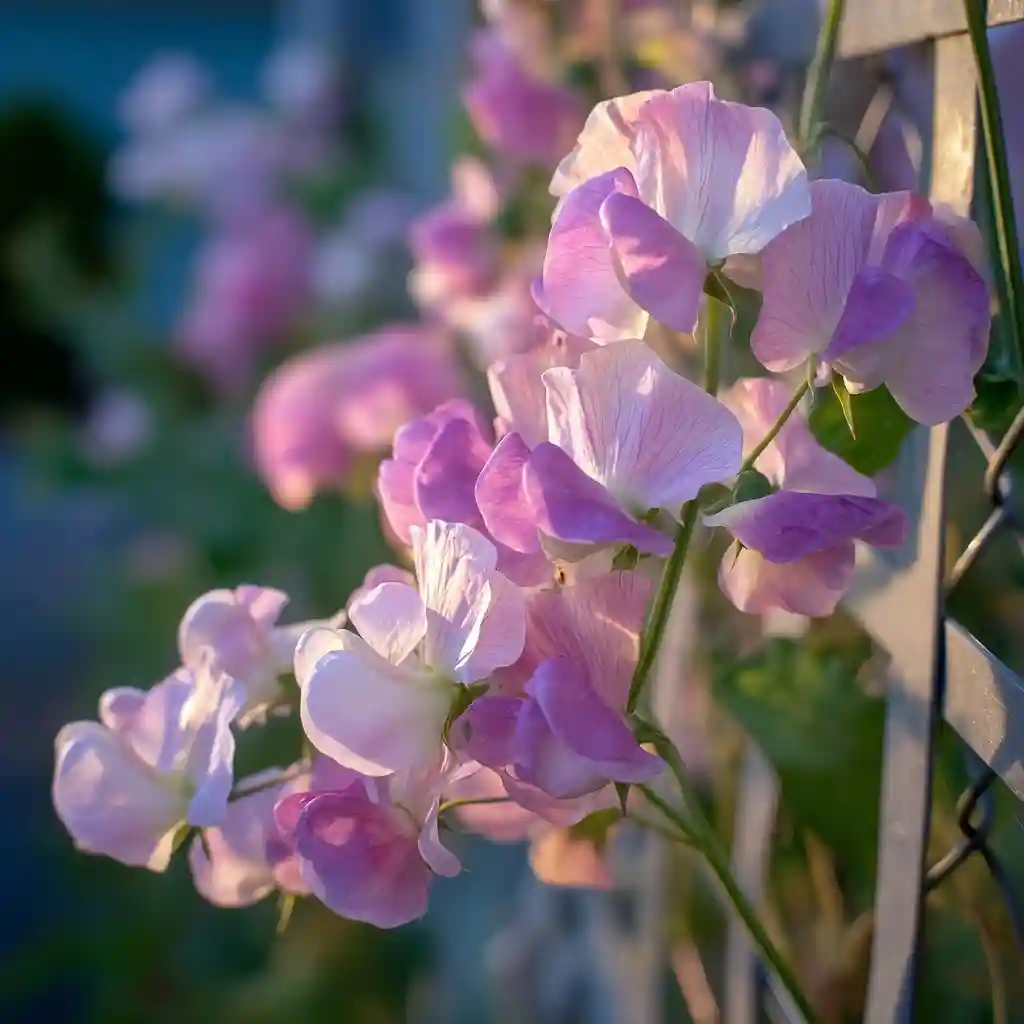
Sweet peas are among the most beloved spring flowers for one irresistible reason—their heavenly fragrance. These annual vines bloom profusely in spring and early summer, covering trellises, fences, or arches with delicate, ruffled petals in pastel pinks, purples, blues, and creams.
Sweet peas prefer cool weather, so plant seeds directly into the ground as soon as the soil is workable in early spring. For an earlier start, you can sow them indoors 6–8 weeks before the last frost. Choose a sunny location with rich, well-drained soil, and provide a sturdy support right from the start—they love to climb.
💡 Quick Tips for Growing Sweet Peas:
- Soak seeds overnight to speed up germination
- Pinch back young seedlings to encourage bushy growth
- Harvest blooms often to keep the plant producing
These nostalgic flowers are a staple in cut arrangements and look stunning in jam jars or hand-tied bouquets. Their scent is a pure embodiment of spring—plant them near outdoor seating areas to enjoy every whiff.
13. Zinnias: The Colorful Showstoppers
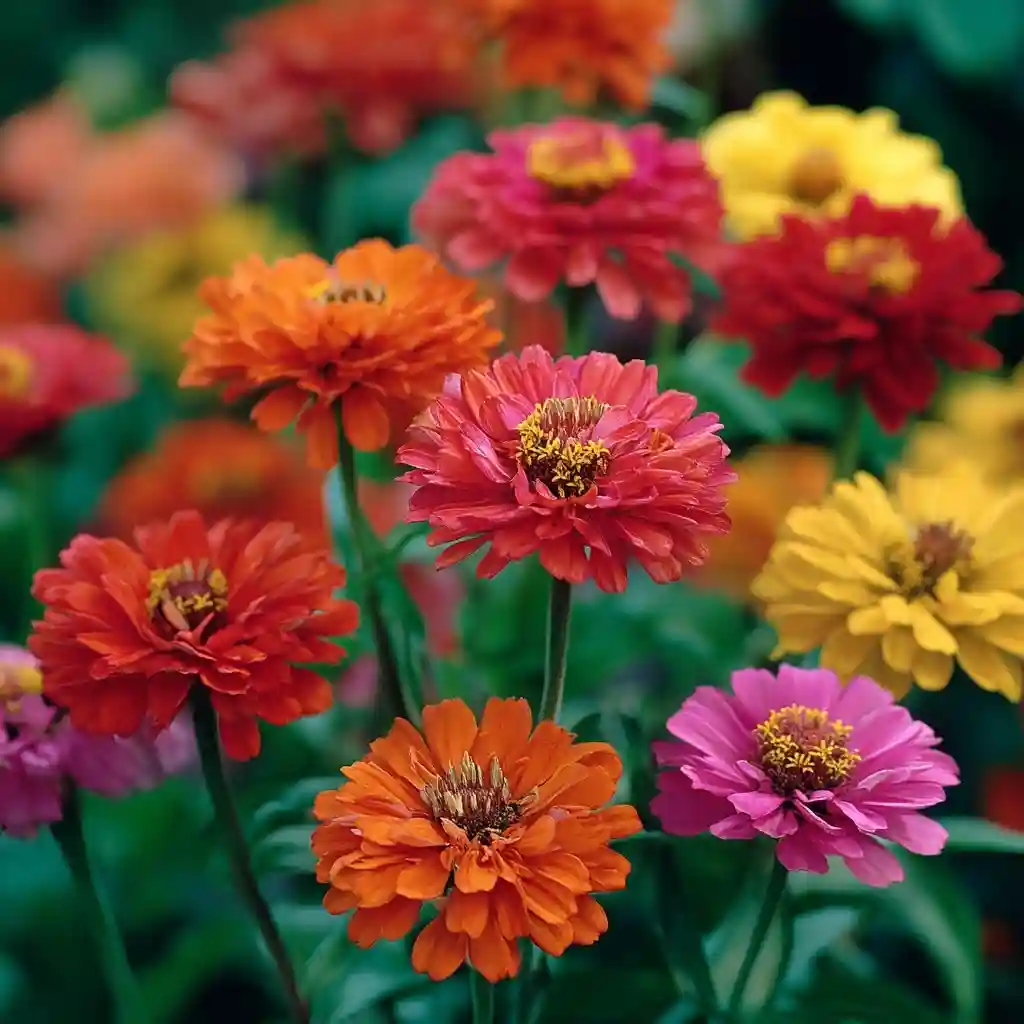
If you’re after vibrant, long-lasting spring flowers that truly pop, zinnias are your go-to. These sun-loving annuals are famous for their bold blooms, ranging from simple single-petaled varieties to lush, dahlia-like double forms. Their rainbow of colors—hot pinks, oranges, yellows, reds, and even greens—makes them perfect for adding energy to any garden.
Zinnias thrive in full sun and well-drained soil. They’re incredibly easy to grow from seed, making them a favorite for beginners. Direct sow into the garden after the last frost, and you’ll see blooms in as little as 6–8 weeks. Space plants 6–12 inches apart depending on the variety, and avoid overhead watering to prevent powdery mildew.
💡 Quick Tips for Growing Zinnias:
- Deadhead regularly to encourage more blooms
- Choose disease-resistant varieties like ‘Zahara’ or ‘Profusion’ for low-maintenance care
- Great for cut flowers—cut early in the morning for longest vase life
Zinnias attract butterflies and bees, making them a great pollinator plant. Whether you’re filling a flower bed, creating a cutting garden, or adding a burst of color to containers, zinnias deliver all season long.
14. Nasturtiums: Edible Beauties
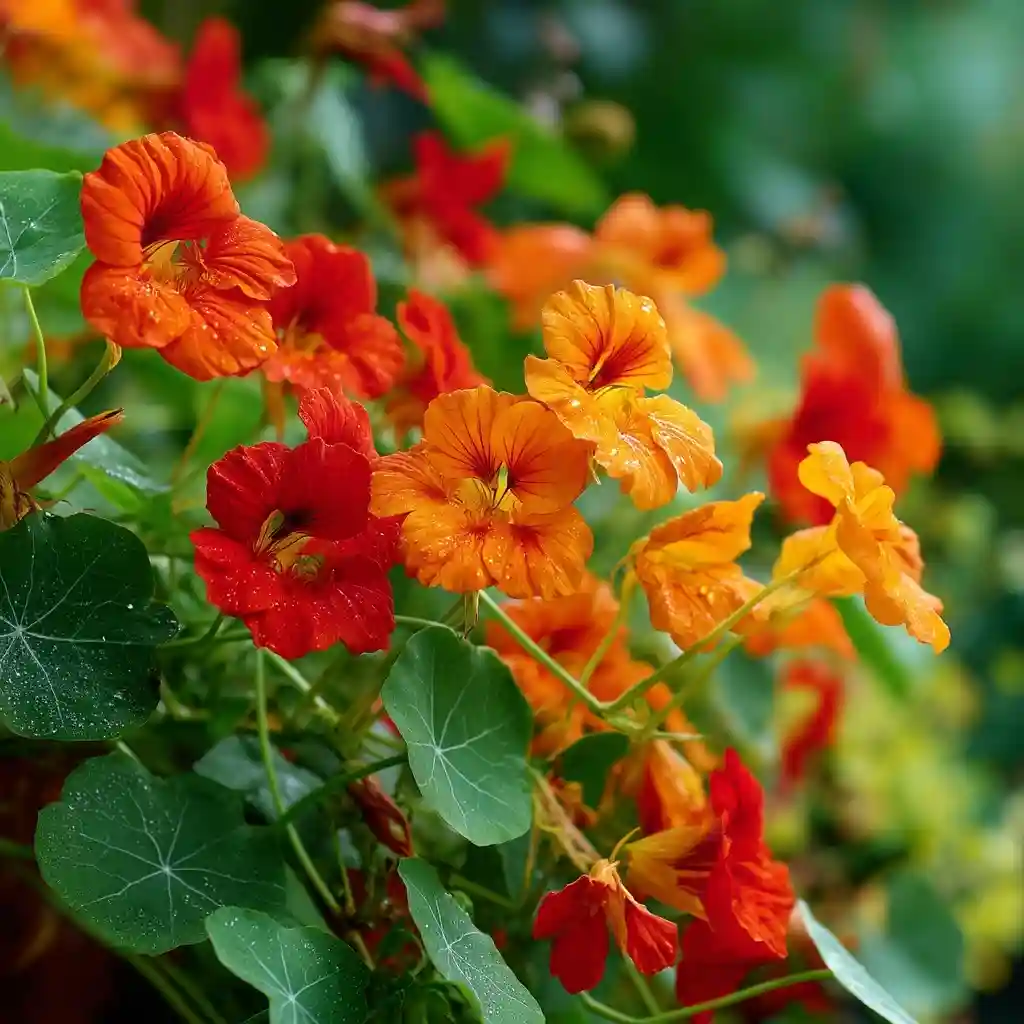
Nasturtiums are the overachievers of the spring flowers world—beautiful, edible, and easy to grow. These cheerful annuals bloom in warm shades of orange, red, and yellow, and both their flowers and leaves are edible, adding a peppery kick to salads and garnishes.
They thrive in full sun and poor to average soil—yes, you read that right. Too much fertilizer actually reduces flowering. Sow seeds directly outdoors after the last frost, spacing them 10–12 inches apart. You can choose from trailing varieties for hanging baskets or compact types for borders and containers.
Nasturtiums are also known for their pest-repelling qualities, making them a great companion plant for vegetables.
💡 Quick Tips for Growing Nasturtiums:
- Don’t overwater—let the soil dry slightly between waterings
- Harvest flowers regularly to encourage more blooms
- Try variegated-leaf varieties for extra visual appeal
These playful plants are perfect for edible gardens, cottage borders, and kids’ gardening projects. Their fuss-free nature and edible charm make them as practical as they are pretty.
15. Orchids: The Tropical Touch
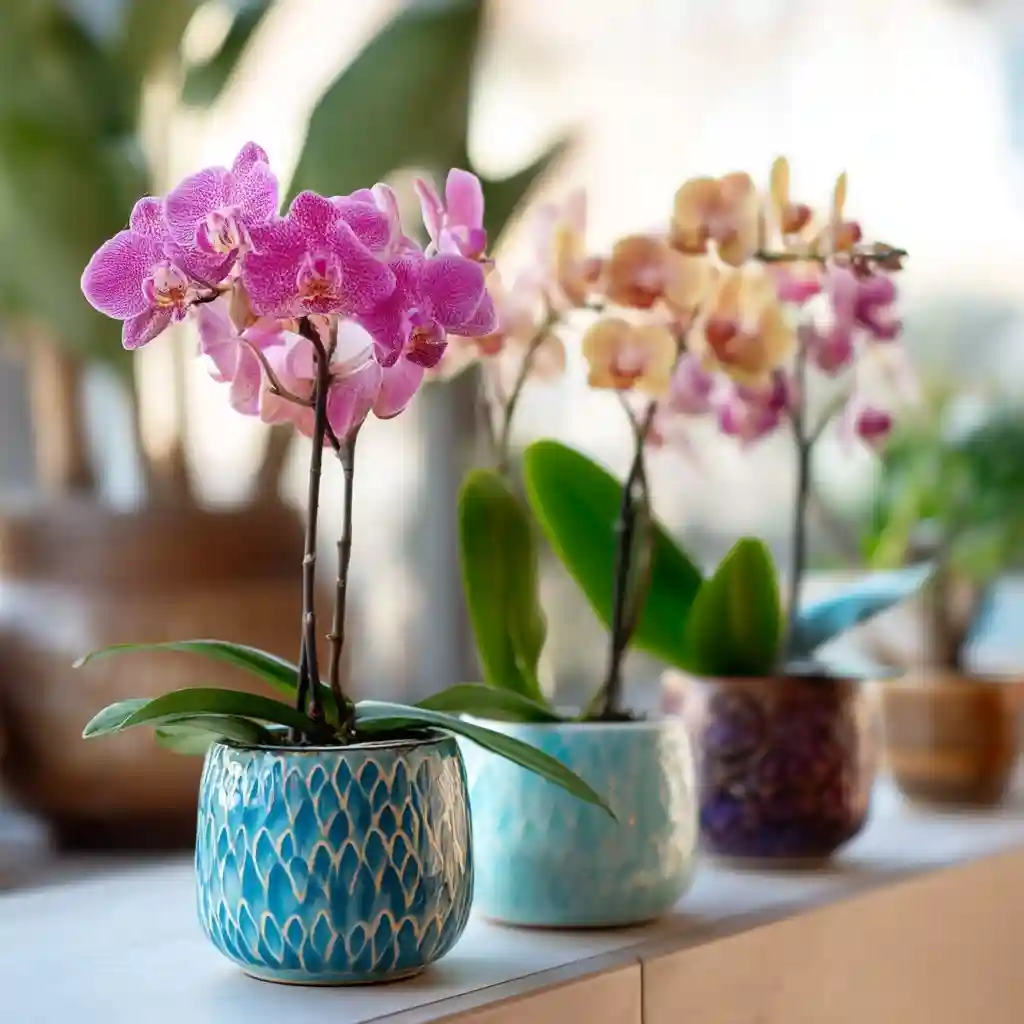
Orchids may not be the first bloom that comes to mind when thinking of spring flowers, but certain varieties thrive outdoors in warm climates—or indoors with the right care. Known for their exotic beauty and unique flower structure, orchids bring a tropical elegance to any space.
Phalaenopsis, Cattleya, and Dendrobium orchids are popular options for beginners. While most orchids are epiphytes (growing in bark, not soil), some terrestrial types like Bletilla striata can be planted directly in garden beds in zones 6–9.
Orchids prefer bright, indirect light and excellent drainage. Indoors, use orchid-specific potting mix and containers with good air flow. Keep the humidity up, and avoid overwatering—wet roots are the fastest route to trouble.
💡 Quick Tips for Growing Orchids:
- Mist regularly or use a humidity tray
- Feed monthly with a balanced orchid fertilizer
- Let them rest after blooming to encourage rebloom
Although they require a bit more attention than most spring blooms, the payoff is worth it. Orchids make captivating focal points on patios, windowsills, and shaded garden corners.
Conclusion
Adding spring flowers to your garden is one of the most rewarding ways to welcome the season. Whether you’re drawn to the elegant lines of lilies, the vibrant chaos of zinnias, or the timeless charm of daffodils and tulips, there’s something in this list for every gardener and every space.
These 15 blooms are not just beautiful—they’re resilient, pollinator-friendly, and often low-maintenance. By mixing textures, heights, and bloom times, you can enjoy a landscape that evolves beautifully from early to late spring.
So grab your trowel, prep your soil, and bring your garden to life—one bloom at a time.
FAQ
Q: When is the best time to plant spring flowers?
A: Most spring-blooming flowers should be planted in the fall (like tulips and daffodils), but annuals and tender perennials such as zinnias, nasturtiums, and snapdragons are best sown or transplanted in early spring after the last frost.
Q: Can I grow spring flowers in containers?
A: Absolutely. Many spring flowers like geraniums, hyacinths, and calla lilies do well in pots. Just be sure to use well-draining soil and monitor watering closely.
Q: Which spring flowers attract pollinators?
A: Snapdragons, zinnias, foxgloves, and sweet peas are especially attractive to bees, butterflies, and hummingbirds.
Q: Are any of these flowers edible?
A: Yes! Nasturtiums are entirely edible—both the flowers and the leaves—and add a peppery flavor to salads.
Q: What’s the easiest spring flower for beginners?
A: Daffodils and zinnias are both incredibly beginner-friendly, requiring little maintenance and rewarding you with colorful, long-lasting blooms.
🌿 Love gardening inspiration? Follow me on Pinterest for bold plant ideas, tips, and seasonal color!
More Posts
